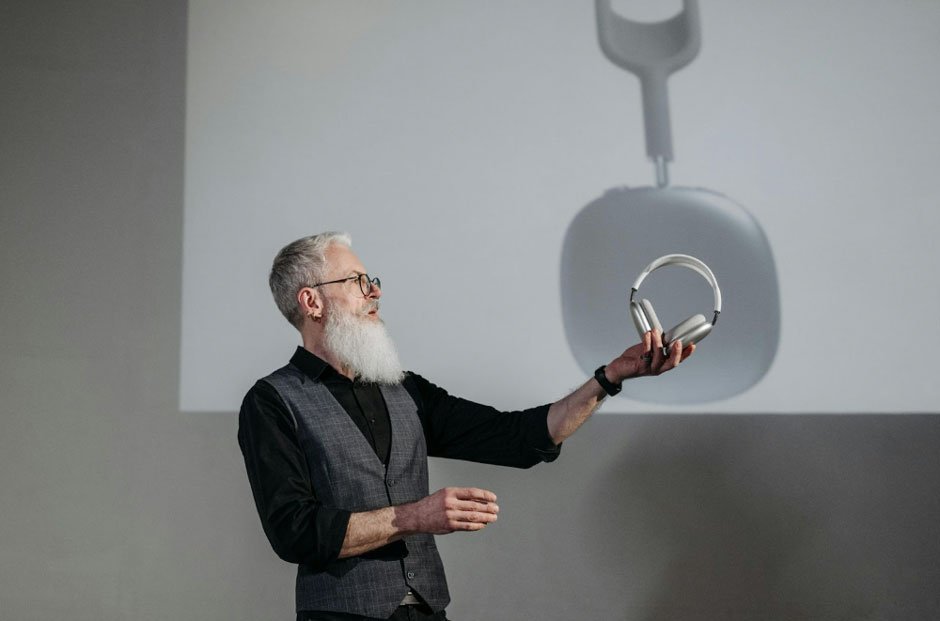Have you ever stared at a product sketch and struggled to visualize how it would look? You’re not alone. That’s where 3D product modeling services come in, technology that helps to change flat concepts into photorealistic, interactive models that look and function like the real thing. Partnering with a 3D product modeling studio isn’t just about creating pretty visuals – it’s a strategic business decision that saves money, accelerates production, and prevents costly mistakes before they happen.
From e-commerce giants to automotive innovators, forward-thinking companies leverage 3D modeling services to gain a competitive advantage. This technology has become indispensable in today’s fast-paced market, where the ability to visualize, refine, and market products efficiently can make or break a business.
Understanding 3D Product Modeling
3D product modeling represents a quantum leap from traditional design methods. Instead of relying on two-dimensional sketches or expensive physical prototypes, designers use advanced software to create detailed three-dimensional digital representations of products. These models go far beyond static images – they’re fully manipulatable, allowing you to examine every angle, test different configurations, and even place your product in virtual environments.
The applications are virtually endless. Furniture companies can showcase how their pieces would look in different room settings. Electronics manufacturers can test ergonomics and functionality before production begins. Jewelry designers can experiment with countless gemstone arrangements in minutes rather than days. This flexibility makes 3D modeling services an essential tool for businesses looking to streamline their design-to-production pipeline.
Why Modern Businesses Can’t Afford to Ignore 3D Modeling
The business landscape has evolved dramatically, and companies still relying on traditional prototyping methods are disadvantaged. Consider these compelling reasons to adopt 3D modeling service solutions:
First, consumer expectations have changed dramatically. Today’s shoppers demand rich, interactive product experiences. They want to zoom in, rotate, and examine products from every angle before making purchasing decisions. Static product photos don’t cut it anymore.
Second, speed to market has become a critical competitive factor. In industries where trends change rapidly, the ability to iterate quickly can mean the difference between leading the market and playing catch-up. Digital models allow for near-instant modifications compared to the weeks often required for physical prototypes.
Finally, seamless collaboration across distributed teams is essential in our globalized economy. A 3D product modeling company can create files that designers, engineers, and marketers worldwide can access and evaluate simultaneously, eliminating costly delays and miscommunications.
The Transformative Benefits of Professional 3D Modeling
Working with an experienced 3D product modeling studio delivers five game-changing advantages that can revolutionize your product development process:
- Unparalleled Precision – Digital models accurately reveal every detail, allowing you to identify and correct design flaws long before production begins. This level of precision can reduce manufacturing errors by up to 40%.
- Cost-Efficient Iterations – Changing a digital model costs pennies compared to modifying physical prototypes. Do you want to test five different color options or three alternative materials? With product 3D modeling services, these changes can be made in minutes rather than days.
- Powerful Marketing Assets – High-quality 3D renders outperform traditional product photography in engagement and conversion rates. Many businesses report a 20-30% sales increase after implementing 3D visuals in their marketing.
- Accelerated Development Cycles – 3D modeling can shave weeks or months off product development timelines by enabling real-time collaboration and instant modifications.
- Global Collaboration Made Simple – Share interactive 3D files with manufacturers, investors, or remote team members anywhere in the world, ensuring everyone works from the same accurate reference.
Success Stories That Demonstrate Impact
The practical benefits of 3D object modeling service solutions become clearest when examining real-world applications. Consider these examples:
A premium kitchenware brand used 3D modeling to digitally test 12 different handle designs for a new cookware line. This approach saved over $80,000 in prototyping costs and allowed them to bring their best-performing design to market six weeks ahead of schedule.
An e-commerce startup specializing in custom furniture replaced its entire product photography operation with 3D renders. This reduced its product launch costs by 60% and decreased returns by 35%, as customers had a more accurate representation of what they were purchasing.
These examples illustrate how 3D product modeling has moved from a nice-to-have luxury to an essential business tool across industries.
Selecting the Right 3D Modeling Partner
Choosing the proper 3D product modeling studio requires careful consideration. Look for a partner with specific experience in your industry, as the requirements for medical device modeling differ significantly from those for consumer electronics.
Evaluate their technical capabilities carefully. Do they work with the software platforms that best suit your needs? Can they deliver the specific file formats your team requires? Most importantly, review their portfolio thoroughly to ensure their quality and style align with your vision.
Be wary of providers offering suspiciously low prices. Quality 3D modeling requires significant expertise and time investment. Cutting corners here often leads to models failing to serve their intended purpose, ultimately costing more revisions and delays.
The Future of Product Visualization
As technology advances, 3D product modeling continues to evolve in exciting ways. We’re seeing the rise of AI-assisted modeling tools that can generate base models from simple sketches in seconds. Real-time configurators allow customers to customize products directly on company websites. And with the growing importance of the metaverse, 3D product assets are becoming valuable beyond traditional applications.
These developments suggest that 3D modeling services will become more integral to business operations in the coming years. Companies that adopt these technologies now will be well-positioned to capitalize on future opportunities.
Making the Strategic Choice
The question facing businesses today isn’t whether they can afford to invest in 3D product modeling but whether they can afford not to. In an increasingly competitive and visual marketplace, the ability to develop, refine, and showcase products effectively has become table stakes.
Partnering with a skilled 3D product modeling studio provides the tools to work smarter, move faster, and connect with customers more effectively. It’s an investment that pays dividends throughout the product lifecycle, from initial concept to final sale.





